UN Fails to Raise Funds to Remove Oil from Decaying Tanker Off Yemen's Coast

The United Nations on Thursday fell far short of raising the money it needs for an operation to salvage 1.1 million barrels of oil from a decaying vessel moored off Yemen's coast and avert an environmental disaster.U.N. officials have been warning for years that the Red Sea and Yemen's coastline was at risk as the Safer tanker could spill four times as much oil as the 1989 Exxon Valdez disaster off Alaska.The war in Yemen suspended maintenance operations on the Safer in 2015. The U.N. has warned its structural integrity has significantly deteriorated and it is at risk of exploding.Deputy U.N.
Wave MiniBOSS Bilge Water Separator Systems
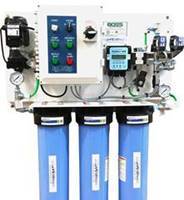
A new version of the Wave MiniBOSS IMO separator is now available. The Series II Wave MiniBOSS offers a faster flow rate, providing 0.5m³/hr across all models . All models of the separator are available for DC or AC power.Approved by the IMO, ABS and US Coast Guard, it is MEPC 107 (49) certified for use on all vessels from 400 Gross Tons. The MiniBOSS system ensures that no traces of oil or other pollutants such as microplastics, are discharged overboard thanks to its use of a pre-filter and two Wavestream oil removal filters.The Wave MiniBOSS is a neatly designed bulkhead mounted system.
RMG to Assess Ship Wreck Leaking Oil Off NY
The U.S. Coast Guard has contracted Resolve Marine Group to conduct a full assessment of oil remaining on the Coimbra wreck, located approximately 30 miles southeast of Shinnecock, N.Y. If substantial oil still remains, and if feasible, the Coast Guard will work with Resolve Marine Group to remove oil from the wreck in order to reduce pollution risks to the environment.The operation is scheduled to take place from April 28th to May 30th. The initial evaluation will assess the condition of the tanker and what potential environmental impact still exists. Based on the assessment, possible oil removal operations will take place.During the operation…
AMCF Calls for Greater Cooperation
The third edition of the Asian Marine Casualty Forum (AMCF) concluded with delegates calling for greater cooperation and continuing dialogue to address the major challenges now facing the marine casualty and salvage industry.Following the unprecedented success of the Forum last week, the organisers LOC, hope the AMCF will return for a fourth edition of the conference during Singapore Maritime Week in April 2021.Highlights of the final day on Friday 12th of AMCF 2019 included a session on bribery and corruption, wrecks and the environment and container ship casualties, with delegates hearing from world leading industry specialists and…
Oil Removed from WWII Era Shipwreck
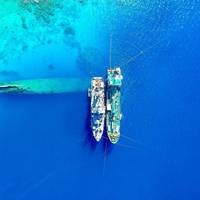
A U.S. Navy led team has removed 229,000 gallons of oil from a sunken World War II era German heavy cruiser that has been resting on the seafloor near the Marshall Islands for more than 70 years.After being transferred to the U.S. as a war prize, the cruiser Prinz Eugen was loaded with oil and cargo and used to assess survivability of warships during the Operation Crossroads atomic bomb tests in the Pacific. The ship survived two atomic blasts before being towed to Kwajalein Atoll…
Insights: Todd Schauer, President, American Salvage Association

Todd Schauer is Director of Operations at Resolve Marine Group, as well as President of the American Salvage Association. After graduating from the U.S. Coast Guard Academy with a degree in Naval Architecture in 1991, he followed that up with graduate degrees in Naval Architecture, Marine Engineering and Mechanical Engineering from the University of Michigan. And, while his considerable U.S. Coast Guard experience includes shipboard engineering, marine safety, advanced engineering and emergency response, he is best known for his longtime role in the commercial salvage business.
IMO Regional Pollution Centre Assists Greece Oil Spill Clean-up
The International Maritime Organization (IMO)-administered Regional Marine Pollution Emergency Response Centre for the Mediterranean Sea (REMPEC) is providing technical expertise to help clean up beaches in Greece affected by an oil spill. Two experts are in Greece (8 to 14 October) to give technical support on sunken oil assessment, removal techniques and efficient oil removal from sandy beaches. This follows the sinking of the AGIA ZONI II, off Piraeus, on 10 September. The experts are from the Centre of Documentation, Research and Experimentation on Accidental Water Pollution (Cedre) based in Brest, France, and from the Italian National Institute for Environmental Protection and Research (ISPRA) based in Rome, Italy.
USCG Recognizes T&T Marine Salvage’s Capabilities

T&T Marine Salvage, a member company of the Teichman Group, founded in 1957, received a new certification by the U.S. Coast Guard to detect and recover non-floating oils. T&T is the first Coast Guard recognized Salvage and Marine Firefighting service provider to receive this new Oil Spill Removal Organization classification initiated by the U.S. Coast Guard in 2016. This new certification is in recognition of T&T’s years of experience conducting non-floating oil detection and recovery operations and their expansive inventory of hydrographic…
Interview: Todd Schauer - President, American Salvage Association

Todd Schauer is Director of Operations at Resolve Marine Group, as well as President of the American Salvage Association. After graduating from the U.S. Coast Guard Academy with a degree in Naval Architecture in 1991, he followed that up with graduate degrees in Naval Architecture, Marine Engineering and Mechanical Engineering from the University of Michigan. And, while his considerable U.S. Coast Guard experience includes shipboard engineering, marine safety, advanced engineering and emergency response, he is best known for his longtime role in the commercial salvage business.
Tech File: Fire Boom for the US' Worst Oil Spill

On April 20, 2010, the Deepwater Horizon mobile offshore drilling platform was destroyed as a result of a catastrophic blowout of the Macondo 252 well in the Gulf of Mexico. The blowout resulted in a continuous discharge of approximately 3.19 million barrels of oil over three months covering approximately 30,000 square miles of the Gulf. It was the worst accidental oil spill in U.S. history. Due to the massive amount of oil being spewed into the Gulf, three aggressive oil removal methods were authorized: mechanical skimming, dispersant application and controlled burns.
Limitless Salvage
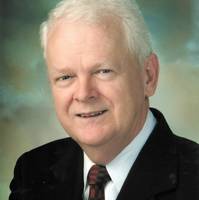
Whether driven by treasure hunting or environmental protection, the days of forgotten wrecks, even at great depths, is past. It seems like every month we see reports of long-lost maritime wrecks being discovered on the ocean bottom and treasures being salvaged from great depths. We also hear regularly of oil being recovered from sunken wrecks. There is now no practical limit to the ability to recover objects from the sea floor, regardless of depth, currents, weather, or other obstacles. The only existing obstacle seems to be financing - and costs are decreasing regularly.
US Orders Owner to Clean Up Ruptured Pipeline
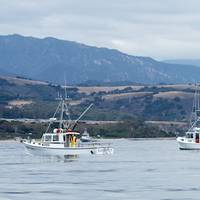
The U.S. Environmental Protection Agency and the U.S. Coast Guard issued a joint federal Clean Water Act order to ensure the cleanup of heavy crude oil leaked from a pipeline near Refugio State Beach, Santa Barbara County, Calif. The order requires Plains Pipeline, L.P. (a.k.a. Plains All American Pipeline), the pipeline owner and operator, to continue its cleanup work inland, beachside, and in the ocean, to contain the oil and prevent further shoreline contamination. Today’s…
First Retrofit Plant for Drain Water Treatment
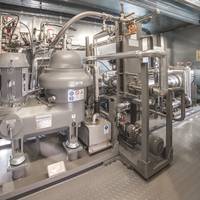
With two centrifuge skids for the treatment of drain water, GEA’s Business Unit Mechanical Separation, recently delivered the first retrofit plant. While drilling for oil, drain water collects on the platform in large volumes, which is passed into large tanks together with other waste water occurring. In conformity with the IMO Regulations MEPC.107(49) this contaminated water must not be drained into the ocean before corresponding treatment and de-oiling. The disposal of drain…
Marine Salvage & Oil Spill Response Insights
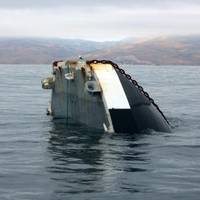
Last month Maritime Reporter had the good fortune to receive insights from a trio of maritime salvage leaders – Paul Hankins, Tim Beaver & Jim Elliott – garnering insights on one of the most challenging and ever-changing sectors of the maritime market. It was recently written “salvors have become more closely tied to Oil Spill Response Organizations (OSROs).” Why? Hankins The Oil Pollution Act of 1990 (OPA90) defines how all stakeholders will respond to potential or actual oil spill responses.
New Tool for Recovering Oil from Sunken Wrecks
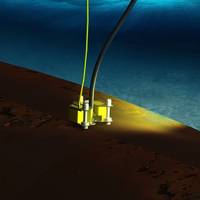
A tool for removing oil trapped in submerged vessels has been developed in Norway by design specialists Miko Marine. The launch of the Moskito aims to address the pollution threat that exists with the large numbers of sunken ships around the world that still contain quantities of oil in their tanks as cargo or bunker fuel. Many of the thousands of ships sunk during World War II now have 70 years of corrosion eating at their plates and the days are drawing inexorably closer when the pollutants that they contain will escape.
Petrobras Develops Technology to Cut GHG
A new technology to reduce the emission of greenhouse gases (GHG) is developing a demonstration scale in Shale Industrialization Unit (SIX) in Paraná, in partnership with Petrobras Research Center (Cenpes). Called CO2 capture, this technology is being tested in a prototype fluid catalytic cracking unit (FCC) - process that transforms heavy oil lighter oil derivatives. This is the first unit to preindustrial scale of FCC in the world using oxyfuel technology (replacement of air used in the combustion of fuels by pure oxygen) for capturing carbon dioxide (CO2) gas released during the industrial refinery processes. The FCCs are very important units in the production process of derivatives…
BSEE's Ohmsett Facility Receives US$4-Million Grant
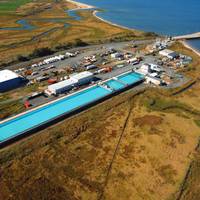
The funds allocated to BSEE will provide for infrastructure resiliency improvements at the bureau's national oil spill response research and renewable energy test facility, Ohmsett, located at Naval Weapons Station Earl in Leonardo, N.J. The Ohmsett facility includes the nation’s largest saltwater tank used for testing oil removal technologies, providing unique research and applied training capabilities. After Hurricane Sandy, BSEE quickly worked to complete a thorough damage assessment of the facility and complete necessary repairs in order to return it to operational status.
NOAA Identifies Lurking Environmental Threats

A new NOAA report that examines national oil pollution threat from shipwrecks has been presented to the U.S. Coast Guard. With as many as 20,000 recorded shipwrecks in NOAA’s database, the May 2013 report finds that just 36 sunken vessels scattered across the U.S. seafloor could pose an oil pollution threat to the nation’s coastal marine resources. Of those, 17 were recommended for further assessment and potential removal of both fuel oil and oil cargo. Based on vessel contents…
Non-Tankers Next on OPA 90 List

In 2008 the USCG issued the tanker final rule for salvage and marine firefighting (SMFF) under the Oil Pollution Act of 1990. This rule primarily required tank ships and barges carrying oils as defined in the 33 CFR 155 as cargo to pre-contract qualified salvors to promptly respond to a marine casualty in U.S. waters. While tankers were the primary focus of the new rules, Non-Tankers – defined by the USCG as any vessel over 400 gross tons – waited quietly for a likely turn with SMFF requirements.
NOAA Report Examines Shipwreck Oil Pollution Threat
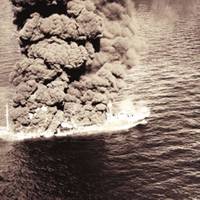
NOAA presented to the U.S. Coast Guard today a new report that finds that 36 sunken vessels scattered across the U.S. seafloor could pose an oil pollution threat to the nation’s coastal marine resources. Of those, 17 were recommended for further assessment and potential removal of both fuel oil and oil cargo. The sunken vessels are a legacy of more than a century of U.S. commerce and warfare. They include a barge lost in rough seas in 1936; two motor-powered ships that sank in separate collisions in 1947 and 1952; and a tanker that exploded and sank in 1984.
Coast Guard Response to Vicksburg Spill Continues

The unified command continues to respond to a crude oil spill in the lower Mississippi River near mile marker 436 in Vicksburg, Miss., Thursday. At 10:05 a.m. response crews removed fuel from the damaged barge MOC-12 after reconfiguring oil-pump equipment. Following completion of the oil removal operations the damaged barge will be inspected and prepared for transit to a maritime facility in nearby Vicksburg. The MOC-15 barge has been moved upriver from the MOC-12 oil removal operation and is waiting for transportation to a maritime facility.
Vicksburg Oil Spill Causes 800 Vessel Queue
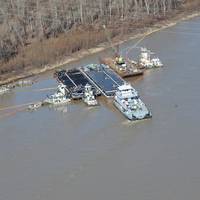
Lower Mississippi vessel traffic queue management ongoing as Unified Command continue their response to damaged barge. Following completion of the oil removal operations the damaged barge will be inspected and prepared for transit to a maritime facility in nearby Vicksburg. The MOC-15 barge has been moved upriver from the MOC-12 oil removal operation and is waiting for transportation to a maritime facility. Response crews have deployed 5,300 feet of boom to contain any potential oil releases.
Lower Mississippi Oil Spill Update
The unified command continues response to a crude oil spill near mile marker 436 in Vicksburg, Miss. The tow-barge that is on scene has started removing fuel from the damaged barge MOC-12, which will be inspected and prepared for transit to a maritime facility nearby Vicksburg after oil removal operations are complete. “Despite the response crew efforts to contain the seeping oil, an unspecified amount has broken through the containment boom due to the difficulties of working on a dynamic and powerful river current,” said Capt. William Drelling, Federal On Scene Commander for the Vicksburg oil spill. Response crews have deployed 2,800-feet of boom to contain further oil release. Skimming vessels have recovered approximately 3,900 gallons of oil-water mixture since the incident occurred.









